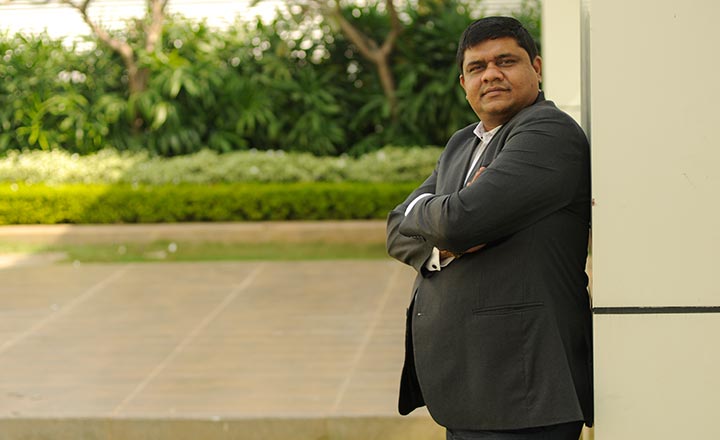Very few companies can boast of creating a franchise as powerful as Shriram Transport Finance Company (SHTF), the flagship company of the Shriram Group and the largest asset financing company in India with assets under management (AUM) of Rs.85,500 crore. It has almost four decades of experience in used commercial vehicle (CV) financing and is the market leader in the business. The company has a strong and capable management team which has helped it withstand several business cycles.
Hitting a bump
However, over the past five years, the company went through a pincer. Between 2012 and 2014, following the ban on mining in several states, CV demand was severely impacted. As the company was slowly coming out of the downcycle, it was again hit by the central bank’s new guidelines on non-performing asset (NPA) recognition. All non-banking financial companies had to move from 180 days past due (dpd) non-performing asset (NPA) recognition to 90 dpd recognition over three years — FY16, FY17 and FY18. This resulted in not only NPAs increasing sharply, but also impacting the NBFC’s income statement, owing to interest reversals and increased provisioning. As a result, since FY11, profit after tax for Shriram Transport Finance has been range-bound between Rs.1,100 crore and Rs.1,300 crore.

Back on track
However, we now believe the company is on the cusp of a strong earnings trajectory over the next three years. Our thesis is based less on the overall CV market recovery and more on company-specific factors that shall drive this earnings growth. We believe that SHTF will be a big beneficiary of reduction in its cost of funds, comprising a larger share of high-cost legacy borrowings.
A quick analysis of its liability profile suggests that the company is still bogged down by high-cost legacy non-convertible debentures (NCDs). Hence, while incremental cost of borrowings via NCDs is around 8%, the company still has a high share of NCDs outstanding that cost over 10%. For example, in FY16, only 51% of the privately placed redeemable NCD of Rs.1 lakh each were at a cost of less than 10%. In FY17, this number increased to 75% as high-cost NCDs were refinanced at much lower rates. We expect such refinancing to continue over the medium term, and this should result in healthy interest cost savings for the company. In FY17, its cost of funds was 9.8%. With incremental borrowings at 8%-8.5%, we expect at least a reduction of 100 bps in the cost of funds over the medium term. As a result, contrary to investor fears of a margin decline owing to increased migration towards lower-vintage vehicles, we believe that margins will remain steady (and can even improve), even if there is some migration towards financing of lower-vintage vehicles.
Besides increasing credit costs, there have been several concerns raised by investors over rising NPAs as well. However, we believe asset quality has been stable on an apple-to-apple comparison. Over the past several quarters, gross non-performing loans (GNPL) have ranged around 4%-4.5% on 180 dpd basis, which is similar to levels seen in FY16 before the stipulated NPL migration. However, an important thing to note is that the balance sheet is much stronger today than it was a year ago. The NPL provision buffer has almost doubled from Rs.2,000 crore in Q3FY16 (prior to NPL migration) to Rs.3,500 crore (ex-provisions for the construction equipment financing subsidiary). Hence, on Q3FY16 GNPL, the provision coverage ratio (PCR), a ratio indicating the funds set aside by banks to cover bad loans, stands at 140%. We believe this is one of the most important things that have been overlooked by the Street.
Our view on the elevated credit costs seen by SHTF over the past two years is that it was merely statutory and not economic. That is, it was only on account of the RBI requirement of NPL migration and not because there were any underlying asset quality issues. We believe write-offs are the only actual loss to any financing business.
We have analysed write-offs, as a percentage of AUM, on a two-year lag basis. The reason for this is that we assume that the time difference between disbursing a loan, the loan becoming an NPL and, finally, writing it off is around two years. This analysis reveals that write-offs, as a percentage of AUM, have remained stable and in line with long-term averages over the past four years.

In the driver’s seat
To sum it up, SHTF’s return ratios are just off cyclical lows with decadal high credit cost and bad loans. However, credit costs, as percentage of AUM, have been stable. Cost of credit has been high only in order to maintain the coverage ratio and not because of high net credit losses.
We believe the worst of SHTF’s asset quality troubles are behind and the firm should witness improving return ratios on lower credit costs. We expect return on asset (RoA) and return on equity (RoE) of 3% and 17%, respectively, in FY19 and beyond. With RoA of 3%, Shriram Finance will be at the upper-end of the RoA range of our NBFC coverage universe.
After six years of no-profit growth, we expect 30% profit CAGR over FY17-20. Additionally, we believe the margin compression fears are overplayed as the company is yet to reap significant benefits in its cost of funds.
We acknowledge that the company’s fortunes are tightly linked to economic growth. Yet, given its niche and difficult-to-replicate business model, virtual monopoly in old vehicle financing, AUM growth rate and steady-state of ROE, Shriram
Finance has enough scope for a rerating.
The writer, in his personal capacity, does not own the stock but the brokerage has a buy call on the stock











